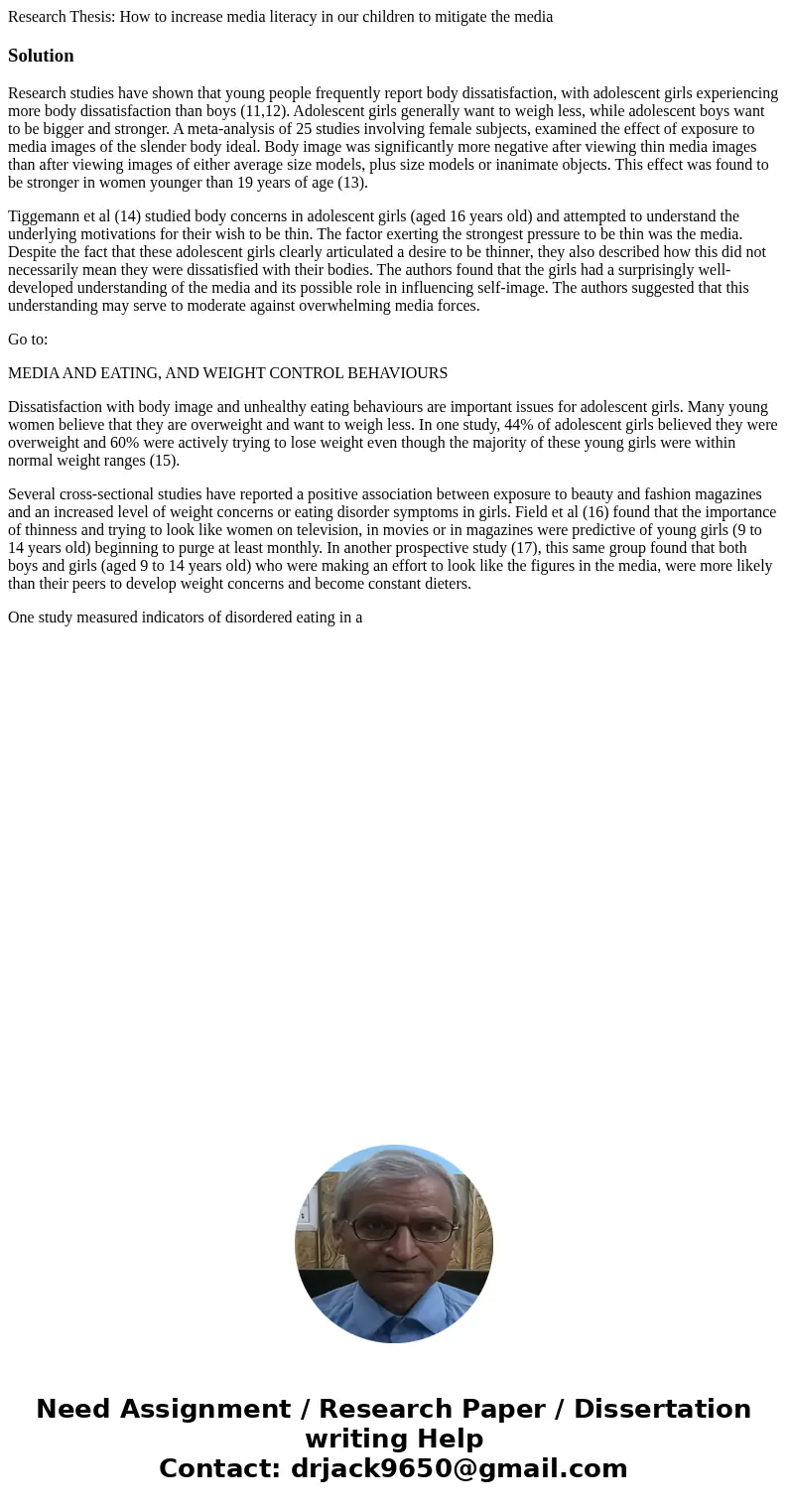Research Thesis How to increase media literacy in our childr
Research Thesis: How to increase media literacy in our children to mitigate the media
Solution
Research studies have shown that young people frequently report body dissatisfaction, with adolescent girls experiencing more body dissatisfaction than boys (11,12). Adolescent girls generally want to weigh less, while adolescent boys want to be bigger and stronger. A meta-analysis of 25 studies involving female subjects, examined the effect of exposure to media images of the slender body ideal. Body image was significantly more negative after viewing thin media images than after viewing images of either average size models, plus size models or inanimate objects. This effect was found to be stronger in women younger than 19 years of age (13).
Tiggemann et al (14) studied body concerns in adolescent girls (aged 16 years old) and attempted to understand the underlying motivations for their wish to be thin. The factor exerting the strongest pressure to be thin was the media. Despite the fact that these adolescent girls clearly articulated a desire to be thinner, they also described how this did not necessarily mean they were dissatisfied with their bodies. The authors found that the girls had a surprisingly well-developed understanding of the media and its possible role in influencing self-image. The authors suggested that this understanding may serve to moderate against overwhelming media forces.
Go to:
MEDIA AND EATING, AND WEIGHT CONTROL BEHAVIOURS
Dissatisfaction with body image and unhealthy eating behaviours are important issues for adolescent girls. Many young women believe that they are overweight and want to weigh less. In one study, 44% of adolescent girls believed they were overweight and 60% were actively trying to lose weight even though the majority of these young girls were within normal weight ranges (15).
Several cross-sectional studies have reported a positive association between exposure to beauty and fashion magazines and an increased level of weight concerns or eating disorder symptoms in girls. Field et al (16) found that the importance of thinness and trying to look like women on television, in movies or in magazines were predictive of young girls (9 to 14 years old) beginning to purge at least monthly. In another prospective study (17), this same group found that both boys and girls (aged 9 to 14 years old) who were making an effort to look like the figures in the media, were more likely than their peers to develop weight concerns and become constant dieters.
One study measured indicators of disordered eating in a

 Homework Sourse
Homework Sourse